The good news is that there are many different ways you can learn music theory through the lens of songwriting and improve your skills. The challenge is finding resources that aren’t overly complicated or non-practical for everyday use.
In this blog post, we will discuss each mode and how the one you choose can transform your song’s feeling instantly!
The topic of Music Theory is vast and complicated. It doesn’t have to be complicated and I’ve created a resource that goes through everything you need to know to be a competent musician, songwriter, and producer. I would highly recommend checking out that article as a primer to the rest of this article and other theory posts I have on this site. It’s titled “The Ultimate Guide on Music Theory for Musicians Who Dislike Theory.“
Are Music Modes a Major Scale?
Musical modes come before the traditional western music scales and date back to ancient Greek culture. They are also referred to as “church modes.”
Musical modes get derived from the parent scale (major and minor scales), and then each mode has its own set of intervals (space between notes) which creates the unique color.
There are many modes in musical theory; however, most of these modes are beyond the scope of this article.
Today we are going to discuss the 7 modes in the Major Scale.
What is the Major Scale?
The major scale has seven notes within the octave, and the intervals are what define its sound.
If you are in a C major scale (all white keys on the piano), the notes and intervals of the Major scale would be:
| Note | Scale Degree | Interval |
| C | 1st Degree – Tonic | Starting Note |
| D | 2nd Degree – Supertonic | Whole Step |
| E | 3rd Degree – Mediant | Whole Step |
| F | 4th Degree – Subdominant | Half Step |
| G | 5th Degree – Dominant | Whole Step |
| A | 6th Degree – Submediant | Whole Step |
| B | 7th Degree – Leading Note | Whole Step |
| C | 8th Degree – Octave | Half Step |
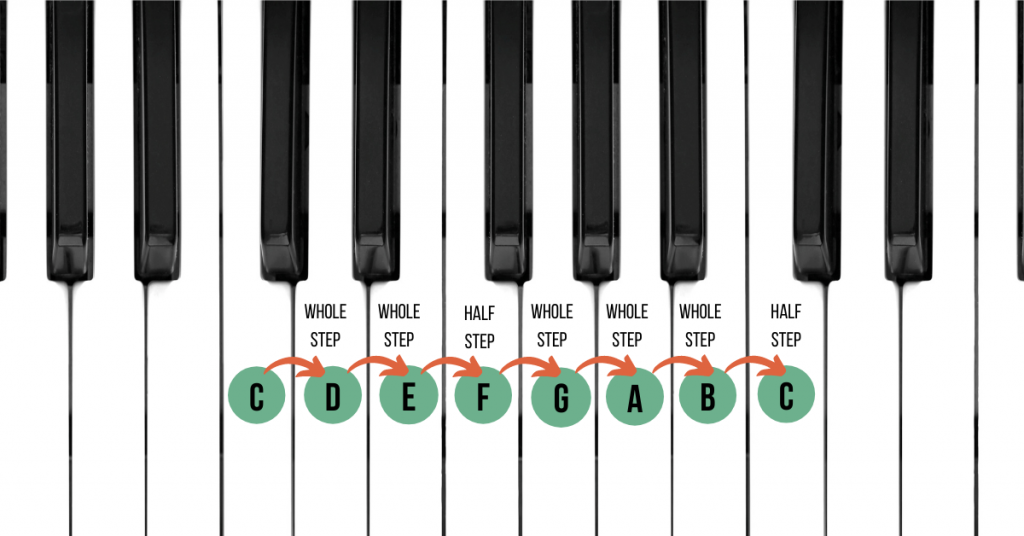
When you start changing the intervals of the Major Scale, you create modes.
Seven modes come from the Major Scale in music theory.
With these seven modes, there are major and minor modes relative to the Major Scale. This is important to understand when you try to figure out the vibe you want your melodic line to create when writing a song.
To get a deep dive into Major Scales, check out my article!
Major Modes
The major modes are:
- Ionian
- Lydian
- Mixolydian
Minor Modes
The minor modes are:
- Dorian
- Phrygian
- Aeolian
But wait, I thought you said there were seven modes? This is only six…
I left out one mode, and that is Locrian.
Locrian would be considered a diminished mode (although this isn’t really a thing). In most cases will not sound pleasing to the ear.
What are the colors of the seven musical modes?
Each of the seven modes can affect the feeling of your music. I want to try and keep these explanations straightforward and not bog you down in music theory. Because, after all, who cares about the theory if we can’t practically apply it, right?
For the following modes, we will discuss it concerning the Major Scale and use C Major (all white keys) as our home base.
Ionian Mode
The Ionian Mode has the same intervals as the Major Scale (See above graphic). The C Ionian Mode would have the same notes as the C Major Scale.
The Ionian Mode will give you your standard “Do, Rey, Mi” musical vibe. There’s nothing wrong with using the Ionian mode (or Major Scale), as it will give your music a familiar, western musical tone.
Dorian Mode
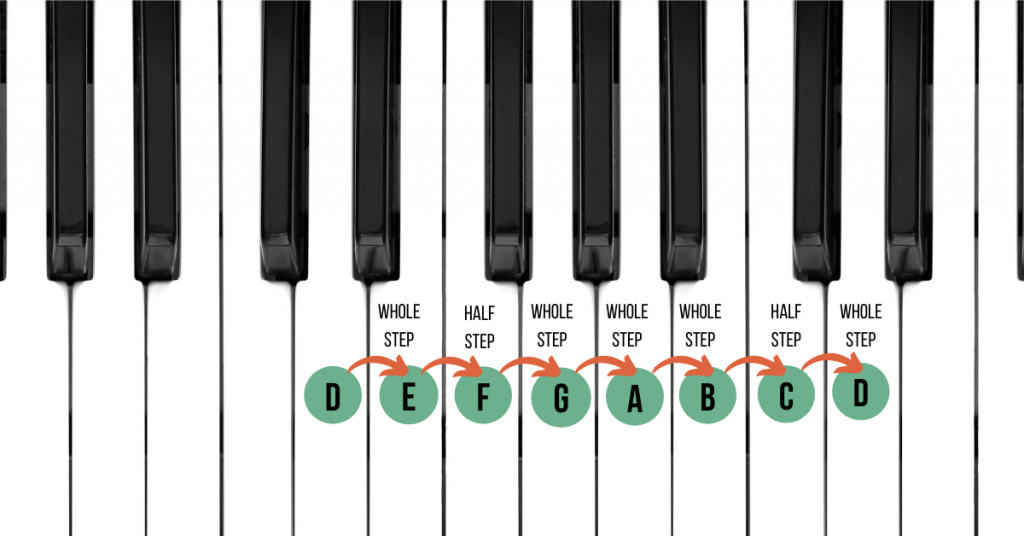
Dorian Mode is the 2nd mode in the Major Scale.
The Dorian Mode has a flat 3 and a raised 6th.
This is a minor mode.
The Dorian Mode can infuse the same feeling of a natural minor scale, but with a little more brightness/optimism because of the raised 6th.
This raised 6th gives the Dorian Mode the brightest sound of the minor modes. However, it still has a foreshadowing tension. So it would be an excellent mode to use if you are trying to communicate something dramatic that is about to happen in your musical story.
The Dorian is a popular mode for songwriters because it straddles the sounds of minor and major.
Simon and Garfunkel’s “Scarborough Fair” uses the Dorian Mode as its primary melodic sound, as well as the Beatles “Eleanore Rigby.”
For a full explanation of the Dorian Scale please follow this link.
Phrygian Mode
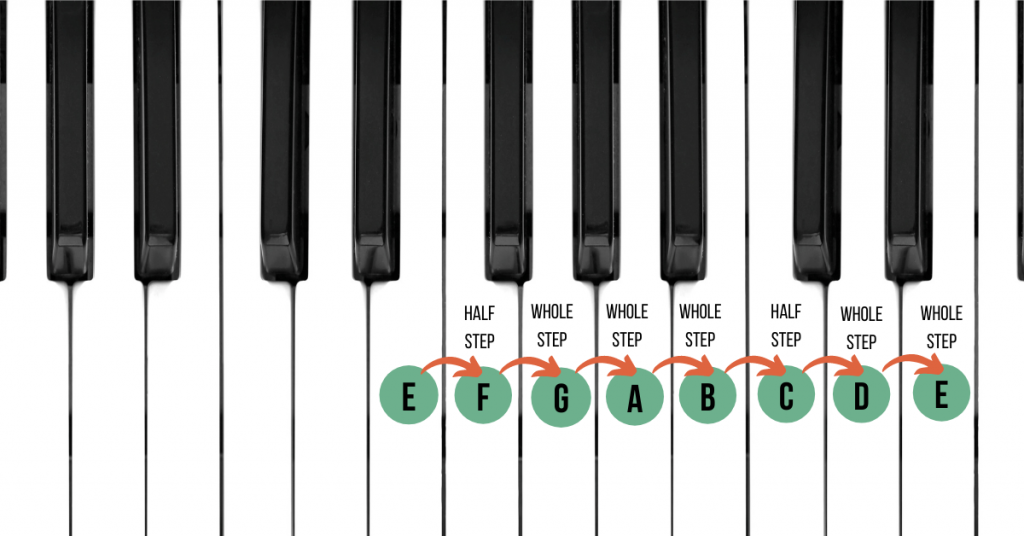
The Phrygian Mode is the 3rd mode in the Major Scale.
The Phrygian Mode has a flat 2, flat 3, flat 6, and flat 7.
Because of its flattened third, it is a minor mode.
The Phrygian Mode generally has an unstable feeling and can create tension and dread within the music.
Phrygian Mode is very dramatic and uneasy in nature. It’s not going to be found in a lot of pop music, but you will often hear this mode in a theatre production or film score.
It’s also a popular mode in metal music and famously used by Metallica in “Wherever I May Roam.”
For a full explanation of the Phrygian Mode please follow this link.
Lydian Mode
The Lydian mode is the 4th mode in the Major Scale.
This mode has a sharped 4th and is a major mode.
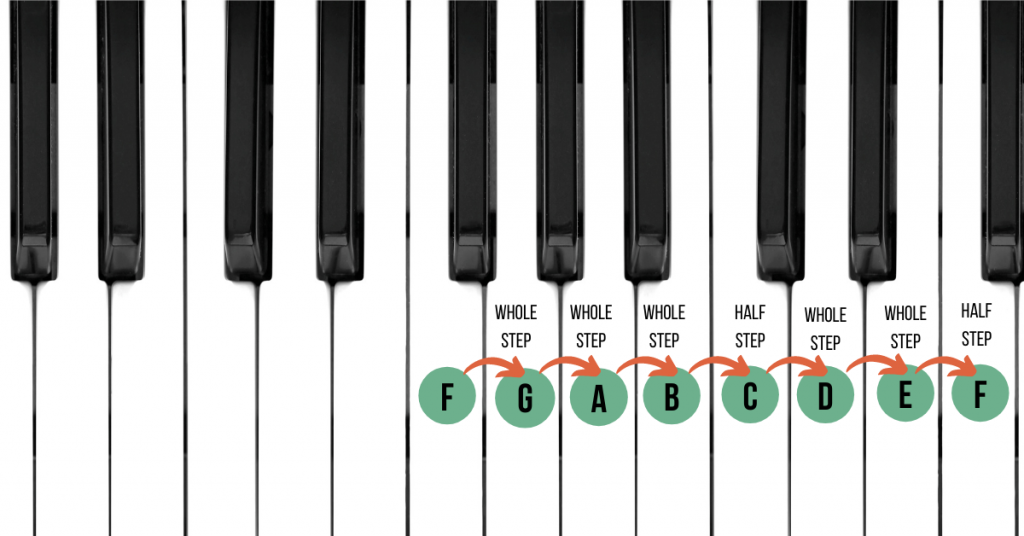
The sound of this mode can be described as bright, dreamy, and ethereal.
It has an “other-worldly” quality to it, making it very useful for songwriters looking to make their lyrics mysterious and beautiful to the listener (learn more about writing great lyrics here). However, don’t sit on the sharp 4 too long as it still has an unstableness that creates tension.
The Lydian Mode is often found in rock songs, jazz, and film scores.
Elliott Smith’s “XO Waltz #4” uses the Lydian Mode.
For a full explanation of the Lydian Scale please follow this link.
Mixolydian Mode
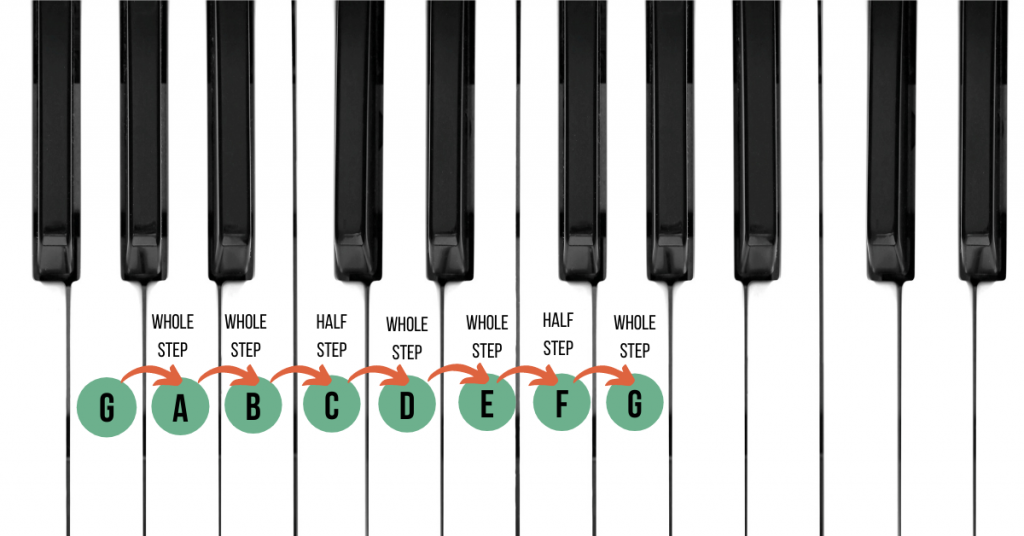
The Mixolydian Mode is the 5th mode in the major scale.
The Mixolydian is characterized by the flat 7 and is a major mode.
This mode can be considered psychedelic and ambiguous.
Mixolydian softens the 7th scale degree (which is a Major Scale has the strongest desire to be resolved to the 1st scale degree), making this mode less tense.
The Mixolydian mode is used all over popular music.
Coldplay’s “Clocks,” Beatles “Norwegian Wood,” and uses the Mixolydian mode.
For a deep dive into the Mixolydian Mode, please refer to my article here!
Aeolian Mode
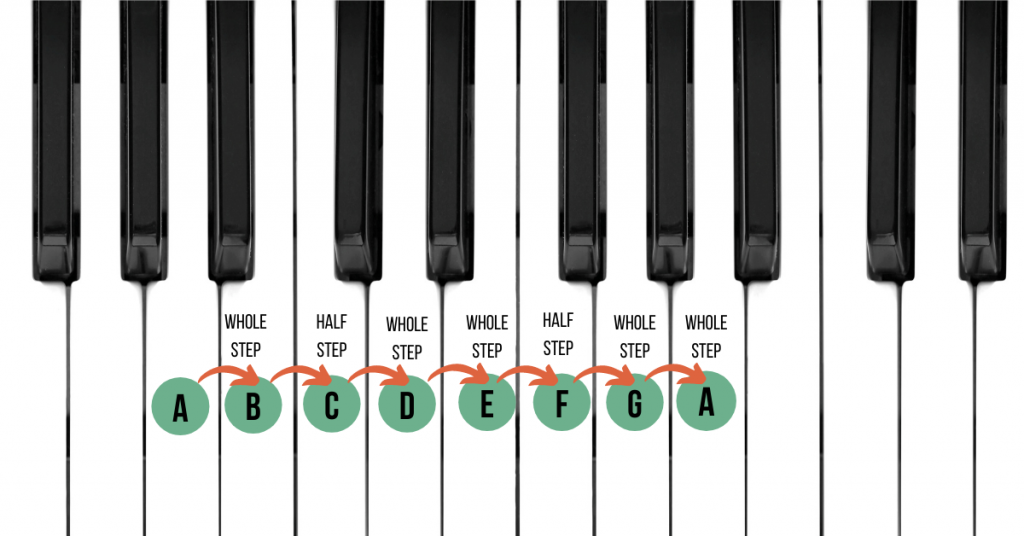
The Aeolian Mode is the natural minor scale and the 6th mode in the Major Scale.
It has a flat 3, flat 6, and flat 7.
It is a minor mode and also known as the Natural Minr Scale.
This particular mode will give your music a feeling of sadness and longing.
The Aeolian Mode is used widely in contemporary music.
R.E.M.’s classic “Losing My Religion” uses Aeolian.
For a more in-depth breakdown of the Aeolian Mode and the other Minor Keys, please reference my article “Aeolian Scale vs. The Minor Scales | How to Leverage These Sad and Beautiful Sounds.”
Locrian Mode
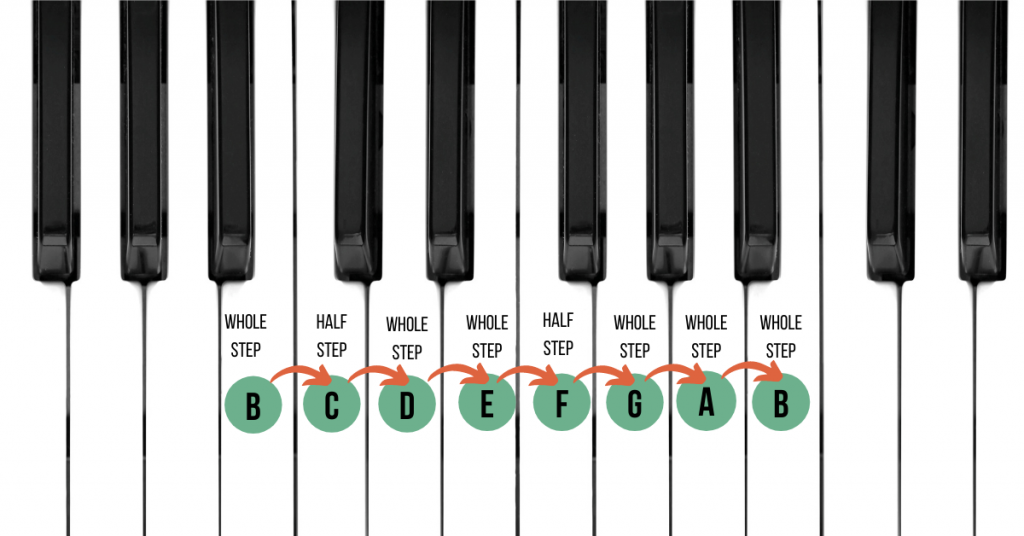
Locrian is the 7th mode in the Major Scale.
The Locrian Mode is an odd and crazy one. It’s sometimes lumped into the minor modes category, but it resembles more of a diminished sound than a minor sound.
Lorian has a flat 2, flat 3, flat 5, flat 6, and flat 7.
The Locrian Mode is extremely unstable, dark, and riddled with tension.
Because of this, Locrian modes are not going to be a natural go-to for creating great pop melodies. You can create exciting melodies, but not very catchy ones.
The Locrian Mode was the type of scale that only existed in music theory as it is not very musical.
However, it has found new life in jazz and some metal music.
Bjork uses it in verse for “Army of Me” if you want a more “pop” example.
For a bigger deep dive into the Locrian Mode please check out my article “The Unusual Locrian Mode | Is it Musically Relevant For Pop Songwriters?”
How does the Natural Minor Scale Compare to The Minor Modes?
If you are talking about the Aeolian Mode, then you are also talking about the Natural Minor Scale. The notes in both will be identical.
The natural minor scale starts on the sixth scale degree and ends on the sixth scale degree, the same as the Aeolian Mode.
However, the Dorian and Phrygian modes are similar to the natural minor scale but aren’t identical.
For example, the Dorian has a raised 6th. The Phrygian second scale degree is lowered a half step making it a minor second. Neither of these interval changes is found in natural minor.
If you don’t understand what any of this music theory speak means, don’t worry about it. Just play around with the modes mentioned and see what feels good and write some music!
Should you stick with only one of the musical modes in your song?
This all depends.
You should think of modes like a “color note” for your song (remember, each mode comes with its inherent vibe). You could use multiple modal “colors” in your music and develop some unique and captivating melodies.
However, you have to trust your ear on this one. Just because you can use different modes throughout your song doesn’t mean that you should.
Melody is king (learn more about writing melodies here), and if you make things too complicated, you risk losing your listener’s attention for the sake of trying to be clever.
Experiment with the major scale modes and try to use them to create tension, lightness, and mood to guide your listeners on a journey.
Remember, at the end of the day, if it sounds right…it’s right.
Tips for using music modes:
Know the chords your playing over
Not every mode is going to play well with the chords being played.
Be aware of the notes that make up the chords in the progression and how the modes you choose to play will interact.
For example, if you play in the C Major key signature (all white keys on the piano) and your chord progression is C, G, Em.
A Mixolydian Flat 7 won’t play well over an E minor chord. It will sound bad because the E minor is an E Diminished in the Mixolydian chord progression. The E Minor doesn’t contain the Flattened 7. The two won’t “gel,” and will clash.
Try pentatonic scales when experimenting with music modes
Pentatonic scales are five-tone scales (I’ve written an entire article on Pentatonic Scales for you to check out).
Pentatonics are lovely for working over pretty much any chord progression and are great for improvising.
What’s cool about this trick is you will find more exciting melodies that work with your song quickly, and it creates a bit of a “mystery” around which mode you might be using.
How to practice modes
The best way to get to know the sound of a mode is to write and repeat a single chord on a guitar or piano and riff over it.
If you have access to some recording software, you could loop a piano chord and practice for hours.
Remember to play over the appropriate chord type. For example, if you play in C Dorian, play a C Minor chord because Dorian is a minor mode!
Go make music!
Music modes are a great way to add a vibe to your next song strategically. Remember to experiment with the different color characteristics of each mode and see where it takes you melodically.
Modes can really add depth and tension to your melody that a typical Major Scale can’t do by itself.
Make sure to listen to the examples that I provided of music that uses the different modes. This will help you to train your ear and develop a greater appreciation for the music you listen to.
Now stop reading this and make music already!

